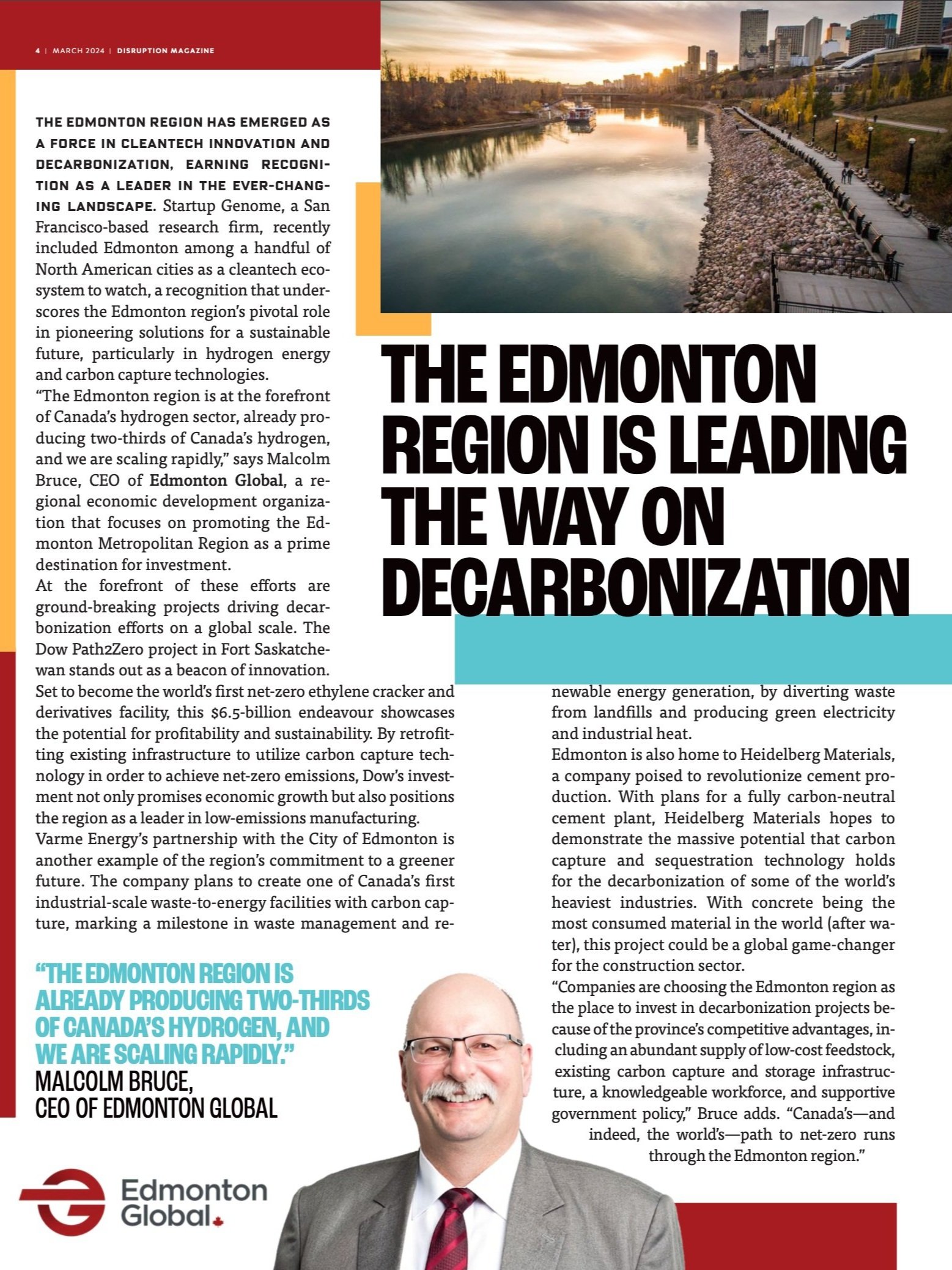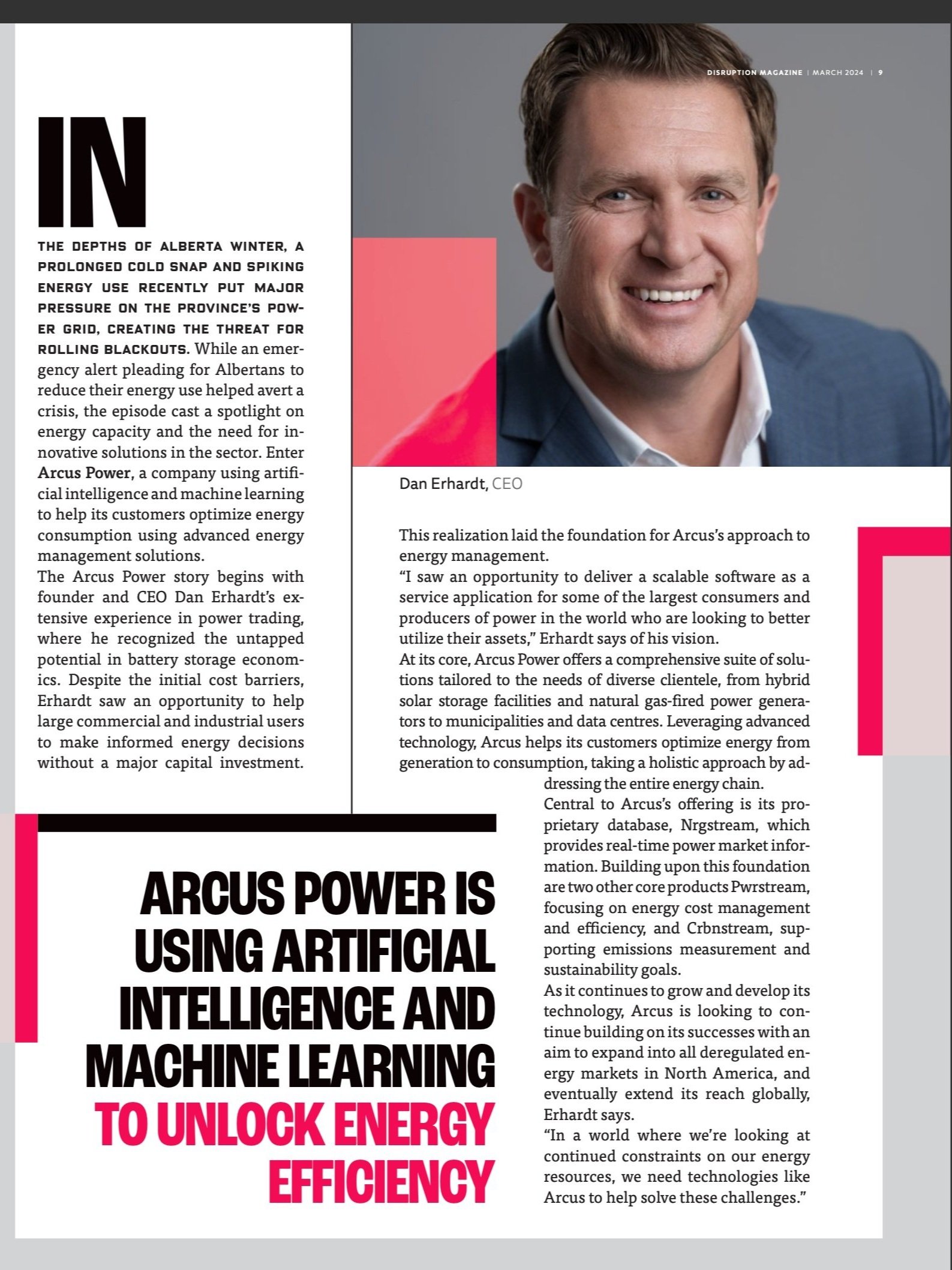The Hydrogen Revolution
“I see an incredible opportunity to leverage our position and make substantial contributions to this transformative global shift.”- Myron Keehn, CEO - Edmonton International Airport
“If we can do it in Edmonton, we can do it anywhere in the world.” - Stephen Beatty, Toyota Canada
“The airport's strategic location and infrastructure make it an ideal testing ground.” - Brent Lakeman, Edmonton Global
tl;dr
Visionary Leadership: YEG President and CEO Myron Keehn is steering the airport towards becoming a leader in hydrogen technology.
Strategic Initiatives: YEG’s Airport City Sustainability Campus, alongside partnerships like Toyota’s hydrogen fuel cell vehicles, demonstrates the airport’s commitment to advancing hydrogen technology, enhancing its visibility and adoption.
Future Outlook: YEG envisions hydrogen-powered flights and a sustainable aviation future.
Edmonton International Airport’s Flight into the Future
In the realm of aviation, where the skies are often the limit, Edmonton International Airport (YEG) is rewriting the script by pioneering an ambitious venture into hydrogen innovation. Airport President and CEO Myron Keehn recently spoke to Disruption to share his insights on the airport's visionary efforts to become a key player in hydrogen technology, a move that not only positions the Edmonton region as a leader in sustainable aviation but also propels the city into the global spotlight for innovation, collaboration, and environmental responsibility.
“I see an incredible opportunity to leverage our position and make substantial contributions to this transformative global shift,” says Keehn.
Our conversation takes place on the heels of COP28, the United Nations global conference on climate change, where Keehn attended as part of the Canadian delegation to showcase the Edmonton region's efforts at building sustainable futures. During the conference, YEG signed onto a Transport Canada-led memorandum of understanding committed to establishing the acceleration of international green shipping corridors, showcasing the potential of its Airport City Sustainability Campus.
For Keehn, keeping the bigger picture in his sights is crucial for understanding the interconnected role YEG can play not only in the aviation industry, but in supporting innovation, economic growth, and the pursuit of sustainability and efficiencies across sectors. Hydrogen has emerged in recent years as a pivotal element in this journey, particularly in the development of some sustainable aviation fuel pathways and other technologies for decarbonization of aviation. The prospect of planes flying up to 2000 nautical miles on hydrogen as early as 2040 looms large, Keehn notes. Being a leader in this space means taking bold action today, and ensuring that YEG, and by extension, Edmonton, remain a significant player in the hydrogen landscape.
“The single biggest issue facing aviation, collectively, is decarbonization,” he says.
The Edmonton Advantage: A Hydrogen Hub
The Edmonton region’s claim to fame as Canada's first hydrogen hub positions it strategically to be a nexus of demand and supply. Edmonton’s airport, with its airside vehicles and taxis that operate predominantly within the airport vicinity, is uniquely positioned to both drive demand and accelerate hydrogen supply. This concept hinges on overcoming a common hurdle in hydrogen adoption – creating sufficient demand in one location to make the process economically viable.
Some onlookers might be surprised to see Edmonton leading the way on hydrogen energy, especially compared to larger markets in North America or even globally. But for Keehn, Edmonton playing such a pivotal role in the global race to net-zero emissions makes sense. The region’s strategic location, abundant resources, innovative spirit and collaborative approach across sectors positions it as a driving force in the transition to sustainable aviation.
“Contrary to popular belief, hydrogen is not a new concept for the Edmonton region,” says Brent Lakeman, Director of the Hydrogen Initiative at Edmonton Global, a non-profit corporation focused on encouraging investment and business development in the Edmonton region by fostering collaboration and partnerships.
With a history spanning decades, hydrogen has been a crucial component in the region's industrial processes, particularly in refining oil products and chemical production. Remarkably, says Lakeman, Alberta stands as Canada's top hydrogen producer, with the Edmonton Metropolitan Region at its forefront.
“We're a leader now when it comes to showing that technologies like carbon capture and storage technologies can dramatically reduce the overall carbon intensity of hydrogen production,” says Lakeman.
For the Edmonton region’s hydrogen revolution to succeed, all parties need to be aligned and pulling in the same direction, adds Lakeman, and so far the efforts have received significant support. “This is one area where we have a really high degree of alignment between the federal government, the provincial government and our municipalities,” Lakeman says.
The Alberta government released its Hydrogen Roadmap in 2021, laying out a plan to attract $30 billion in capital investments to fuel the development of hydrogen technology in the province. With the hydrogen market estimated to be worth $2.5 trillion annually by 2025, the province is staking its claim to a chunk of that market by highlighting its potential to become a global supplier of clean, low-cost hydrogen. The province has set its sights on five target markets: residential and commercial gas utility systems, power generation and energy storage, transportation and mobility, export markets and industrial processes.
Among all these efforts, the Edmonton International Airport stands as a beacon of hydrogen innovation within the region, not only embracing hydrogen technology but also furthering its integration into aviation and transportation sectors, Lakeman adds.
“The airport's strategic location and infrastructure make it an ideal testing ground.”
Across various sectors, including transportation, heavy industries, and energy production, businesses are joining forces to accelerate the adoption of hydrogen technologies. Initiatives like Edmonton Global’s 5000 Hydrogen Vehicle Challenge underscore the region's commitment to exploring diverse applications of hydrogen, from heavy-duty trucks to public transportation systems. Beyond that, leaders in the space are leveraging digital innovations, artificial intelligence, and other advanced technology to enhance the efficiency and scalability of hydrogen production and use, unlocking whole new possibilities for its application.
Adoption, Collaboration, and Innovation
Providing an opportunity for travellers to and from the city to see hydrogen energy at work is crucial to dispelling misconceptions about hydrogen technology and driving consumer adoption. The airport’s partnership with Toyota Canada to bring 100 Toyota Mirai hydrogen fuel cell electric vehicles to Alberta’s roads, for services like car sharing and taxis, is one way to showcase the technology’s potential, he adds.
“Like with any new technology, people need to see it in use and be exposed to it,” says Keehn. “We’re excited to be able to play a role in doing that with hydrogen vehicles. We’re showing consumers hydrogen technology and showcasing it alongside other vehicles, and that will ultimately help drive adoption.”
Increasing the visibility of hydrogen vehicles, particularly around high-traffic areas like airports, will help spark conversations and drive broader acceptance of the technology, says Toyota Canada Vice-President of Corporate, Stephen Beatty. The company has embraced a multi-pathway approach to achieve zero carbon emissions, including a significant focus on hydrogen technology, Beatty adds. Toyota’s strategy extends beyond passenger vehicles to include heavy-duty trucks and the development of synthetic fuels. On the hydrogen front, Toyota sees two avenues to use it as a fuel: the fuel cell as seen in the Mirai, or injecting it directly in existing combustion engines.
By leveraging existing internal combustion engines with hydrogen, Toyota aims to reduce the upfront costs associated with transitioning to low-emission vehicles. Alberta, with its extensive experience in the energy sector, including hydrogen production, plays a pivotal role in this strategy, with the company’s partnership with the Edmonton International Airport at its heart, says Beatty.
“Crucially, the airport is uniquely situated in a region where all three levels of government have come together, where the energy and transportation sectors have linked arms and created what is, in effect, a practical living laboratory for this space,” says Beatty. “If we can do it in Edmonton, we can do it anywhere in the world.”
It’s precisely that type of collaboration that is necessary to drive progress, Keehn adds. Working across sectors, with economic organizations, governments, and other stakeholders, creates an ecosystem that propels the adoption of hydrogen energy. With that collaboration comes innovation, as businesses seek to improve and advance technologies and systems to make hydrogen more affordable, accessible and efficient. YEG’s Airport City Sustainability Campus provides a microcosm for the possibilities hydrogen technology holds for a net-zero future by bringing together diverse entities, from ground handlers to airlines, and acting as a launching ground for innovation by providing support and resources for companies to pursue innovation.
“We're in the right location, with the right elements and the right mindset, and with willing partners across the region to drive this adoption,” Keehn says.
Flying into the future
For Keehn, the vision doesn’t end at hydrogen cars. YEG’s work offers a glimpse into the future – the prospect of the first hydrogen flights. This visionary idea not only speaks to the airport's commitment to innovation but also highlights the collaborative efforts with regulatory bodies like Transport Canada to create a framework for such groundbreaking endeavours. By embracing hydrogen technology, YEG is not only leading the way on the path to decarbonization but is ensuring the Edmonton region is recognized globally as a hub for sustainable innovation. YEG’s vision for a hydrogen-powered future is not just about flight; it's about collaboration, sustainability, and putting the Edmonton region on the map as a leader in the ever-evolving landscape of aviation.
“I think if we fast forward ten years and ask ourselves, what were the key factors that helped us chart a new path,” says Keehn, “I think hydrogen will be one of those factors that helped us get there.”











